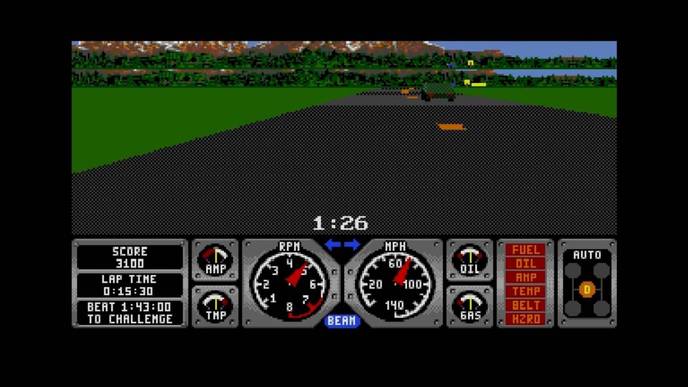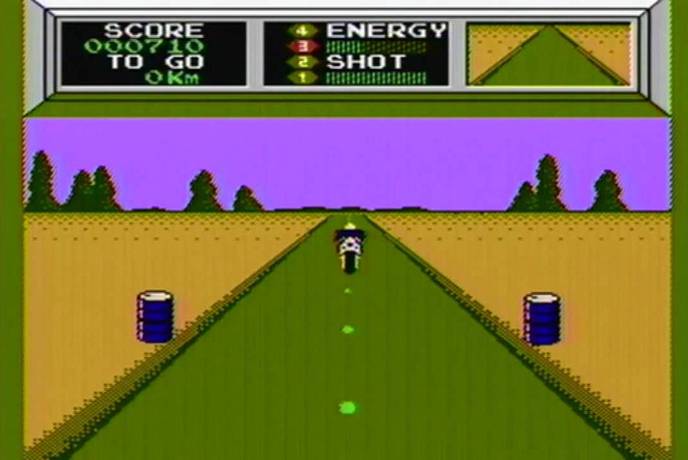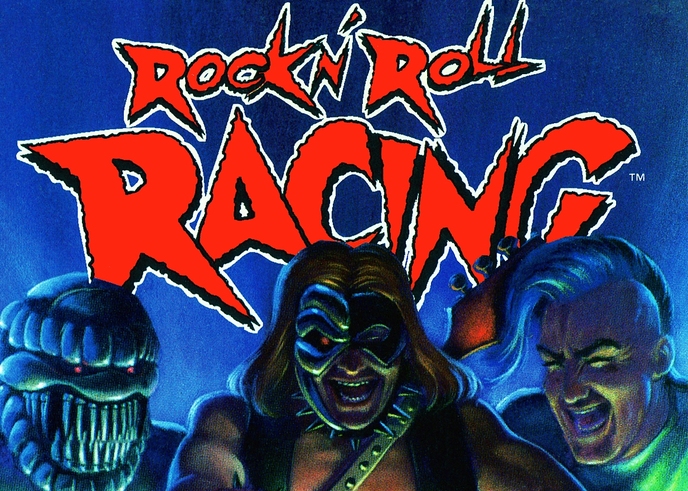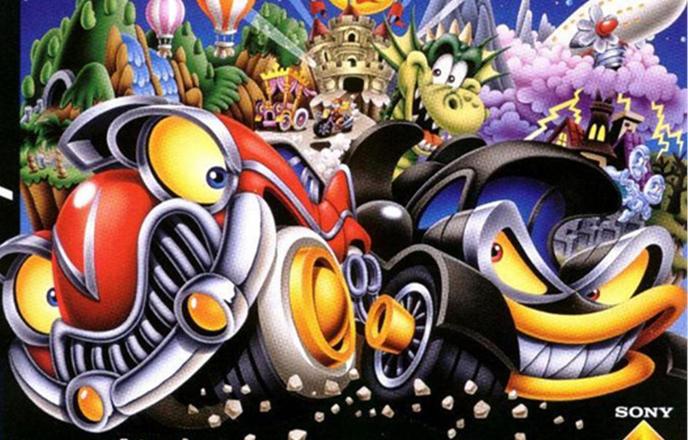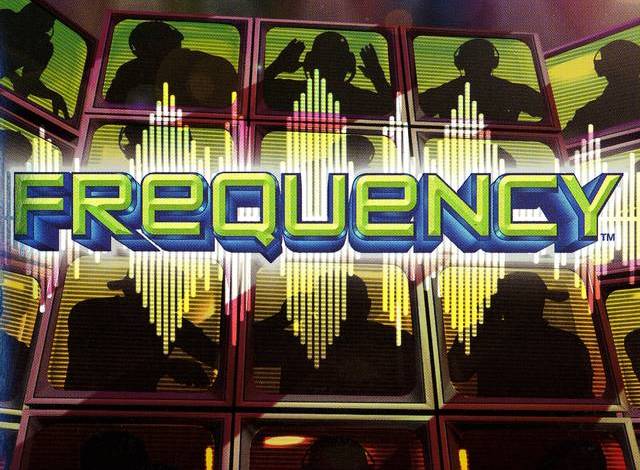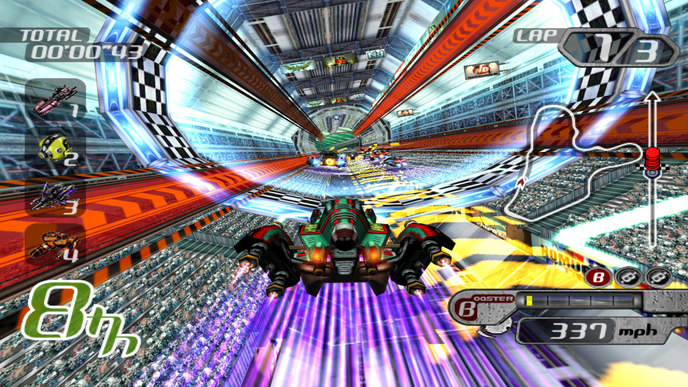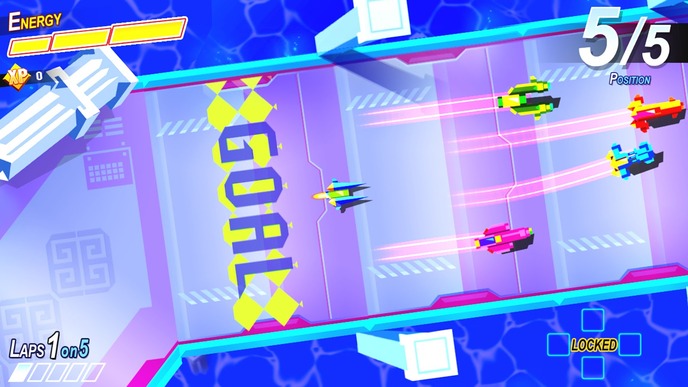Don’t Just Drive: 10 Non-Traditional Racing Games

The beginning of a new year is a good time to change things up. Habits have a tendency to harden over the course of 365 days; last year even added a leap day, or 24 more hours to lie fallow in a rut’s comforting nook. But humans aren’t the only ones vulnerable to routine. Videogames often rest in one of a half-dozen genre: Action, RPG, Sports, Shooter, etc.. As a category, they help with player expectation. As a limiting factor, they allow developers to focus. But our most memorable times playing games often come when these expectations are nudged aside and what is expected gets blown apart, like shackles on a prisoners’ aching wrists.
The Racing Videogame is one of the most solidified of gaming genre. From Pole Position in the arcades to the upcoming Gran Turismo Sport, we usually understand the task at hand: Sit in front of a steering wheel and try to go faster than all the others. But before we get too used to 2017, let’s look at those other, less predictable games featuring vehicles sliding across a track. Here, then, is a quick survey of Non-Traditional Racing games. May they lead you off the beaten path.
Night Driver
I still remember playing this on my Apple II C. All you see are dots twisting on a black screen. The white marks approximate the curving lanes of a road, lit by your headlamps in the dark of night. For such a dead simple presentation, the game is surprisingly addictive and very playable even today. This early attempt at building a sensation of speed is evidence that much can be done with little.
Death Race
This 1976 arcade game is incredibly hard to find now, as very few units were made of this controversial homage to Roger Corman/Sly Stallone’s cult film Death Race 2000. Though in our post-GTA world it seems tame, the idea of bashing into pedestrians to kill them was horrendous to many. Apparently they were meant to be zombified cannibals… so your death-dealing car was an instrument of mercy. But to kids in 1976 the stick-figures might as well have been your parent or teacher or school bully. Cathartic, maybe, but not cool in the burgeoning days of the Disco era.
Hard Drivin’
Touted as “the world’s first authentic driving simulation game,” Hard Drivin’ was slow and laborious to play compared to earlier popular racing titles like Pole Position. But hot damn if it didn’t look like the future. Nowhere else could you imagine being strapped into a driver’s seat while you took loop-de-loops and sped across polygonal racetracks. The arcade cabinet even included a clutch and manual transition, and to begin you didn’t hit a start button but turned a key. But your progress was less important than how you failed: Crash and see your windshield splinter, followed by a slow-motion instant replay of the damaging stunt.
Mach Rider
This early NES game was allegedly built for an American audience out of a Japan-only F-1 game (or so says game historian Jeremy Parish). But regardless of its origins, it is the strange Nintendo-developed game that prioritizes machine guns and dystopian cityscapes over bounding plumbers or magical elves. I hold a sweet spot for this one: Never having played it as a kid, I nonetheless became smitten after downloading and playing in on the Wii U virtual console. That tune gets in your head and stays. It’s a good challenging distraction for those commercial breaks.
Rock ‘n Roll Racing
Few racing games employ a heavy musical theme. This car combat game (made by a pre-Warcraft Blizzard, when they were known as Silicon & Synapse) lays on the licensed rock riffs, with takes on Sabbath’s “Paranoid” and Steppenwolf’s “Born to be Wild.” Many remember it fondly. For me, I would have preferred more tunes from the credited game composer, Tim Follin, renowned for his earlier chiptune sorcery on the Commodore 64 and NES.
Motor Toon Grand Prix
This early PlayStation game came out in Japan in 1994, two years before Mario Kart 64. A quick glimpse offers many parallels: Cutesy cartoon characters, vivid and imaginative tracks, a focus on item-based attacks over realistic driving. The sequel came out in North America but never gained the same traction as Nintendo’s mascot kart racer. At least the game worked as a kind of training wheels; the designer went on to create a little series called Gran Turismo.
Frequency
Harmonix’s first game isn’t a driving game at all. But it used the visual language (hurtling down a path) and rules (checkpoints) of traditional racing games to build a music / rhythm game that would ultimately set the stage for their Guitar Hero phenomenon. The sequel, Amplitude, is considered even more fondly, so much so that Harmonix held a successful Kickstarter to remake the game in 2014. Much of the appeal was lost, though, when most of the music was produced in-house instead of the original’s well-known tracks by popular artists of the day. Still, Harmonix’s early games laid the groundwork for more current titles like Drool’s Thumper. If Frequency is your eclectic European second-cousin whose eyes are still clouded by ‘90s raving, Thumper is your nasty older cousin who listens to death metal but is an Honor’s English student.
Tube Slider
Here lies the lost and forgotten entry in the mid-’90s subgenre of B-tier future/sci-fi racers (alongside Extreme-G and AeroGauge). The name says it all, really: You slide around in tubes. Let it be the pity stand-in for all the A-tier ones that are no longer being made: Wipeout, F-Zero, San Francisco Rush 2049, and Jet Moto.
The Next Penelope
It’s not often you play an homage to F-Zero that cribs from epic poetry. Aurelien Regard uses the story of Homer’s Odyssey as a foundation for what is a beautiful, challenging take on an oft-ignored style: The top-down racer. You play as Penelope who, instead of waiting at home for her returning champion, races across the galaxy to track down Ulysses himself. For such a striking and well-designed game, it’s remarkable that The Next Penelope was a one-man project, with Regard creating all the art, composing the music, and programming the code. You can play it on Steam today. Once set for consoles, the Wii U’s official game release page still worryingly lists the date as “TBD.”
FutureGrind
This was one of my favorite games from E3 2015. Welp, here we are in 2017 and still no FutureGrind. Maybe the developer Milkbag is taking the game’s forward-looking title too literally. But I’m hopeful to be playing it in the new year, as this descendant of Uniracer with an Ikaruga-ian twist is a splendid mixture of speed, rhythm, stunts, and gravity-defying rail technology. In the meantime, at least there’s TRON RUN/r.
Since 2003, Jon Irwin has been paid to write about film, techno, ice cream, wine, golf, drag-racing, French children and videogames. His first book, Super Mario Bros. 2, was published last year by Boss Fight Books. Follow along: @WinWinIrwin.


